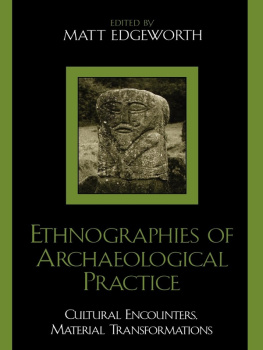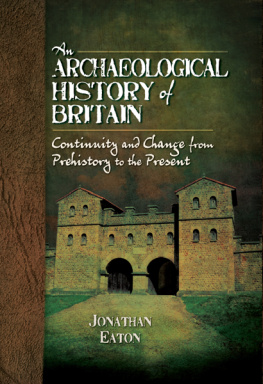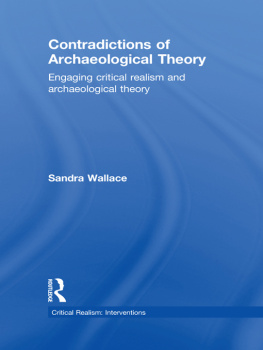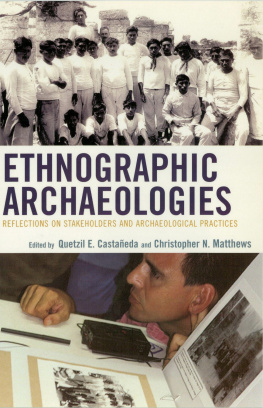Originally published by University College London Institute of Archaeology
First published 2009 by Left Coast Press, Inc.
Published 2016 by Routledge
2 Park Square, Milton Park, Abingdon, Oxon OX14 4RN
711 Third Avenue, New York, NY 10017, USA
Routledge is an imprint of the Taylor & Francis Group, an informa business
Copyright 1983 The Institute of Archaeology
All rights reserved. No part of this book may be reprinted or reproduced or utilised in any form or by any electronic, mechanical, or other means, now known or hereafter invented, including photocopying and recording, or in any information storage or retrieval system, without permission in writing from the publishers.
Notice:
Product or corporate names may be trademarks or registered trademarks, and are used only for identification and explanation without intent to infringe.
Library of Congress Cataloguing-in-Publication Data available from the publisher
ISBN 978-0-905853-13-0 paperback
Baluchistan is a region whose archaeological potential is only beginning to be recognised despite the wealth of sites revealed by Sir Aurel Steins exploration in the 1920s. Initially this apparent neglect stemmed from the countrys position between the major civilisations of Mesopotamia and the Indus valley upon which attention was focussed for many years. However, a shift in the direction of research towards the examination of wide-ranging cultural interaction resulting from work at Tepe Yahya, Shahr-i Sokhta and several Afghan sites including Mundigak, coupled with the important discoveries made in Turkmenia, now puts Baluchistan in a key position, particularly in relation to movements between south-western Afghanistan and the Indus valley. Coincident with this change of emphasis attempts have been made to establish the antecedents of the mature Harappan culture and in this context northern Baluchistan has a special relevance, the southern regions at present appearing to be more closely linked to the mature Harappan, though recent work at Sutkagen-dor and Balakot will no doubt clarify that relationship.
The reconnaissance carried out in 1948 and 1957 had limited objectives and was subject to the dual constraints of time and resources. With only a few weeks and often no more than one colleague it was clearly impractical to attempt a comprehensive regional survey: selective fieldwork to throw light on the distribution of certain wares seemed to be of greater value.
The 1948 survey aimed to trace the southerly limits of a ware first noted near Quetta (Piggott, 1947) and subsequently shown to spread through southern Afghanistan. This ware could be traced on a number of newly-discovered mounds in Sarawan but it died out as the survey penetrated into northern Jhalawan where unfamiliar wares appeared. It was in the hope of relating the latter to the ceramic sequence established in the Quetta valley that trial excavations were carried out at Anjira and Siah-damb, Surab, in 1957 (de Cardi, 1965) when further exploration was undertaken.
A preliminary study of the regions explored by Stein showed certain gaps in his reconnaissance. For instance, although the Kej and Rakhshan valleys in Makran had been extensively surveyed in 1927-28, work in central Jhalawan had been largely restricted to the main routes radiating from Khuzdar with Drakalo as its southerly limit. In the Ornach valley some 15 miles south-west of Drakalo, R. L. Raikes had discovered Kulli-Harappan pottery on Kinneru-damb in 1956 and the area, investigated at his prompting, was found to contain other important sites including Phusi-damb and Nindowari-damb.
In the fifty mile tract of hills between Khuzdar and the Kirthar range only one site, Zidi, had been recorded and hardly any of the passes through that range to Sind had been reconnoitred with the exception of the Bolan and a short section along the Nai Gaj which the late N. G. Majumdar was exploring when he was killed in 1938 (Deva and McCown, 1949). His survey had shown not only the penetration of Nal pottery into western Sind but the presence of Harappan sites along the Gaj. It seemed likely that a similar pattern might emerge from exploration along some of the other migration routes. Of these, the Mula Pass, traversed during the seasonal migrations from upper and central Jhalawan to Kachhi, was of special relevance as linking trackways lay through Anjira and Surab. With the collaboration of the Kalat authorities it was possible to hire camels for survey down the Mula river where, as anticipated, several sites with Harappan pottery were found as well as a large Harappan settlement not far from the point where the river debouches onto the Kachhi plain.
Similar surveys of the Harbab and Phusi group of passes had to be abandoned on the advice of officials in Khuzdar who considered the climbing involved along these routes to be too dangerous. Nor was it possible to explore the eastern approaches to these routes from Sind. Animal transport was unobtainable for an ascent of the Harbab Pass, and camel-drivers recruited for survey up the Gaj refused to venture beyond the point reached by Majumdar because the territory was disputed at that time.
Six years later proposals were put forward for excavations on two sites in the Makran in the hope of relating the wares of that region to the Anjira sequence but events in central Baluchistan have precluded work there. The results of the surveys were given in a preliminary report (de Cardi, 1964: 20-29) but in view of several unsolved problems, notably in relation to the Kulli-Harappan material from Ornach, it had been my intention to await the Balakot report before publishing this material. However, preliminary results of work at Mehrgarh have emphasised the interest of the Sarawan pottery and it has seemed advisable to present the survey material without further delay.
The first survey was carried out during local leave in April, 1948, when I was an Assistant UK Trade Commissioner in Pakistan. Sadly, many of those who helped me are no longer alive, including the late Sir Mortimer Wheeler. I am particularly indebted to the Department of Archaeology, Pakistan, for allowing Sadar Din to accompany me in 1948 and many of our discoveries were due in no small measure to his guidance. I would also record my thanks to Sir Cecil Savidge, then Agent to the Governor-General in Baluchistan, and to the Khan of Kalat and his advisers who gave me hospitality and transport.
On returning to England my commitments to the Council for British Archaeology made it necessary to carry out the 1957 survey during the summer (July-September). The work, sponsored by the Royal Asiatic Society, was made possible by grants from the Leverhulme Research Fellowship, the Pilgrim Trust, the British Academy, the Russell Trust, the University of London, and the Society of Antiquaries of London. As on the previous occasion, officials in Kalat were ever helpful, in particular Mirza Rahimtulla Khan, then Tehsildar of Surab, and Saleh Shah, Naib Tehsildar, Khuzdar. In Ornach Sardar Alem Khan of the Bizanjau supplemented the information kindly provided by Mr Raikes and generously provided for our needs. In many other Brahui villages and encampments we experienced much kindness and hospitality which is remembered long after other aspects of the survey have been forgotten.











